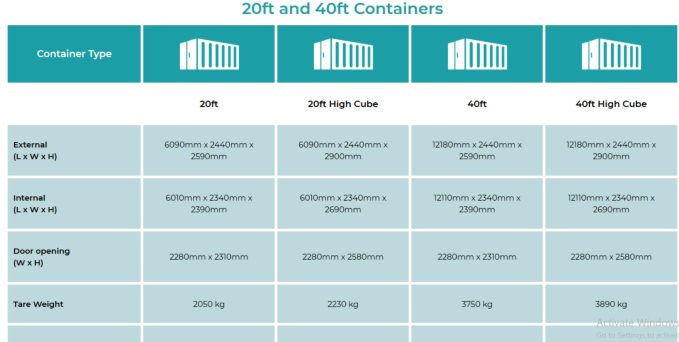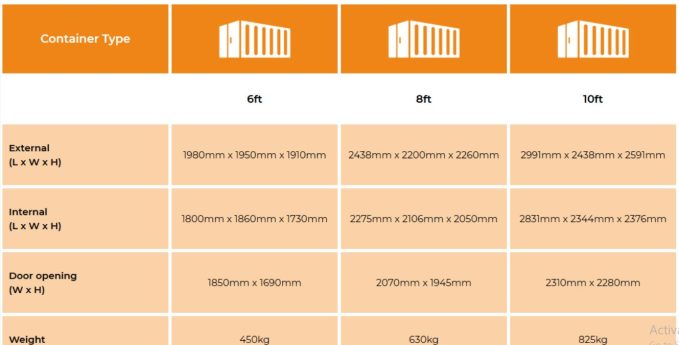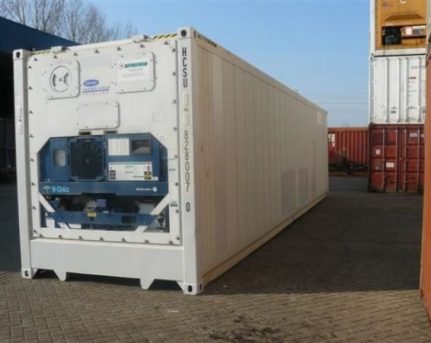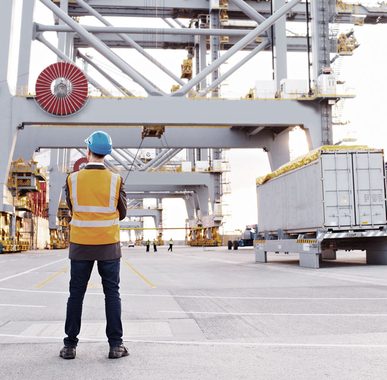Container Info

In the majority of cases, the sides of a container are corrugated. This corrugation typically has a depth of one inch (25mm), which results in a loss of two inches (50mm) from the external width dimension, with one inch being lost from each side. The back of the container, also known as the blank end, also features corrugation. The doors are around two inches (50mm) thick, leading to a loss of approximately three inches (75mm) from the length of the container.
Height represents the primary dimension that undergoes reduction from external to internal dimensions. The floor of a standard container has an underside clearance of approximately six inches (150mm), while the floor itself has a thickness of 27mm (1.1 inches). The roof is also corrugated, which results in the loss of an additional one inch (25mm). Consequently, the internal dimension is approximately eight inches less than the external dimension, which equals 7ft 10 inches (2.39m). However, the internal dimension may vary slightly depending on the floor thickness and construction method used.
Moreover, the steel top rail above the door reduces the entrance height due to its role in maintaining the container's structural integrity. Typically, the steel top rail has a thickness of four inches (100mm), which results in a reduction of entrance height to 7ft 6ins (2.28m), although this may vary slightly depending on the container's specifics.
The weight of a container is a critical aspect of its utilization and transport. Three distinct weights are relevant in this context, namely Tare weight, Gross weight, and Payload. These weights are typically indicated on the external surface of the container doors, either when it is in operation or before it is repurposed for another use.
The Tare weight is the weight of the container itself, without any cargo or contents. In contrast, the Gross weight is the weight of the container plus the maximum Payload it can accommodate, i.e., the total weight of the container. The Payload weight, also known as the Net weight, refers to the weight of the cargo or contents that the container can accommodate.
It is crucial to have an accurate understanding of these weights when transporting containers to ensure they are not overloaded and remain within safe limits. Therefore, careful consideration and adherence to these weight parameters are essential for efficient and safe container transportation.






